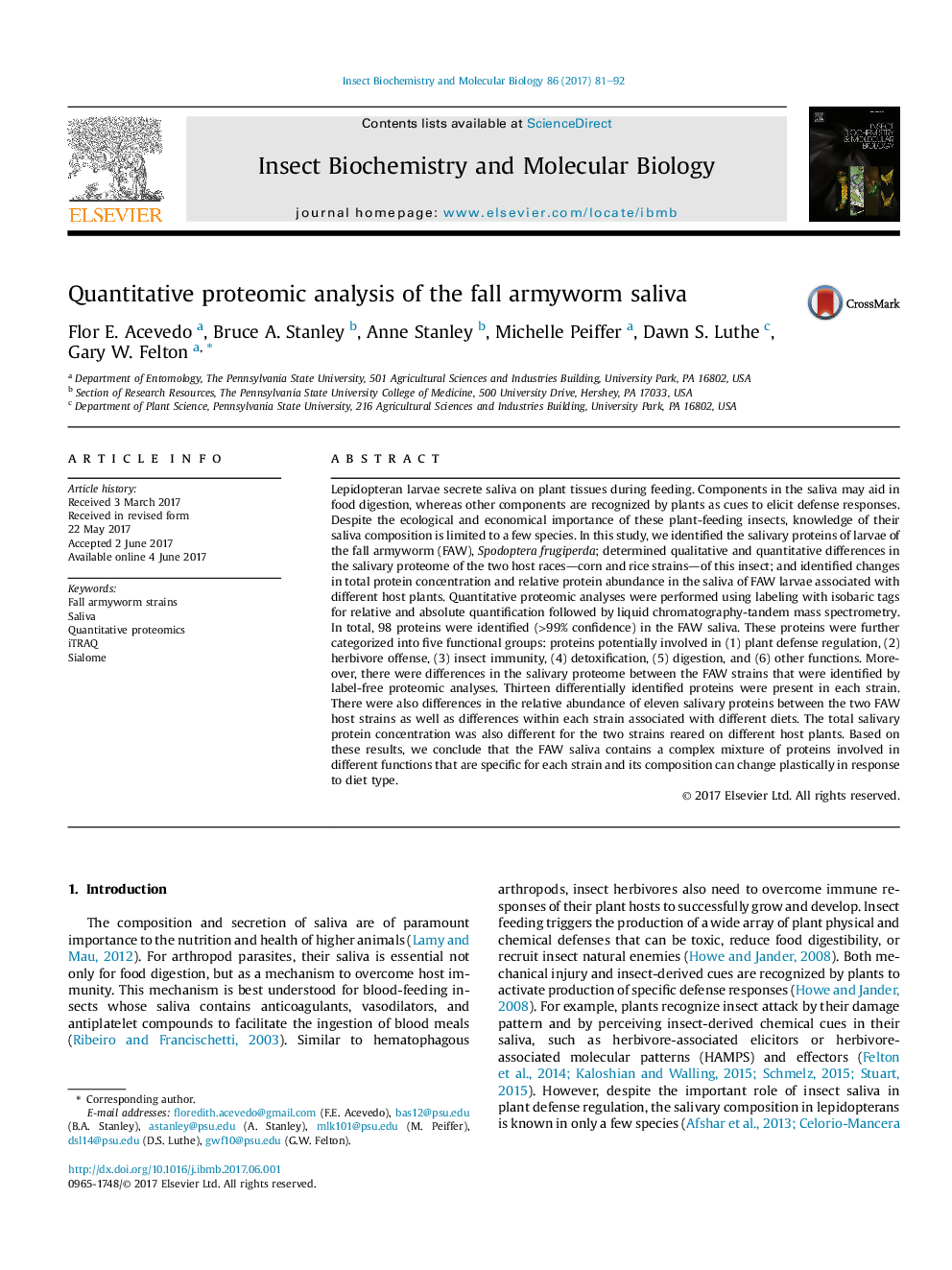| کد مقاله | کد نشریه | سال انتشار | مقاله انگلیسی | نسخه تمام متن |
|---|---|---|---|---|
| 5511121 | 1539466 | 2017 | 12 صفحه PDF | دانلود رایگان |
- The salivary proteome of the fall armyworm strains fed on different plants was identified using iTRAQ labeling and LC-MS/MS.
- A total of 98 salivary proteins were identified and classified in five functional groups.
- There were 13 unique proteins identified in each strain and 11 with differential peptide abundance.
- Fifteen salivary proteins changed quantitatively in corn strain caterpillars associated with different hosts.
- The salivary proteome of fall armyworm caterpillars is distinct for each strain and changes plastically with diet type.
Lepidopteran larvae secrete saliva on plant tissues during feeding. Components in the saliva may aid in food digestion, whereas other components are recognized by plants as cues to elicit defense responses. Despite the ecological and economical importance of these plant-feeding insects, knowledge of their saliva composition is limited to a few species. In this study, we identified the salivary proteins of larvae of the fall armyworm (FAW), Spodoptera frugiperda; determined qualitative and quantitative differences in the salivary proteome of the two host races-corn and rice strains-of this insect; and identified changes in total protein concentration and relative protein abundance in the saliva of FAW larvae associated with different host plants. Quantitative proteomic analyses were performed using labeling with isobaric tags for relative and absolute quantification followed by liquid chromatography-tandem mass spectrometry. In total, 98 proteins were identified (>99% confidence) in the FAW saliva. These proteins were further categorized into five functional groups: proteins potentially involved in (1) plant defense regulation, (2) herbivore offense, (3) insect immunity, (4) detoxification, (5) digestion, and (6) other functions. Moreover, there were differences in the salivary proteome between the FAW strains that were identified by label-free proteomic analyses. Thirteen differentially identified proteins were present in each strain. There were also differences in the relative abundance of eleven salivary proteins between the two FAW host strains as well as differences within each strain associated with different diets. The total salivary protein concentration was also different for the two strains reared on different host plants. Based on these results, we conclude that the FAW saliva contains a complex mixture of proteins involved in different functions that are specific for each strain and its composition can change plastically in response to diet type.
242
Journal: Insect Biochemistry and Molecular Biology - Volume 86, July 2017, Pages 81-92
